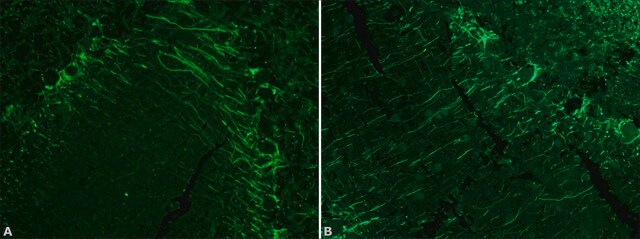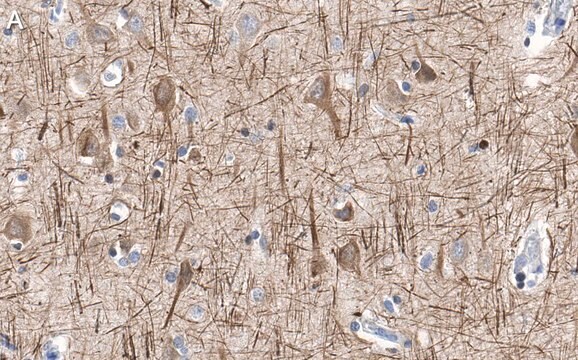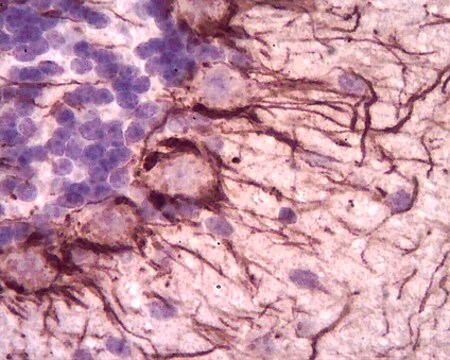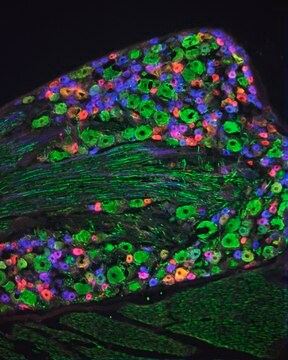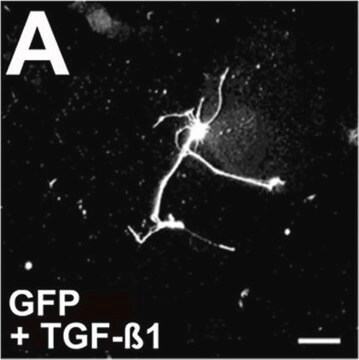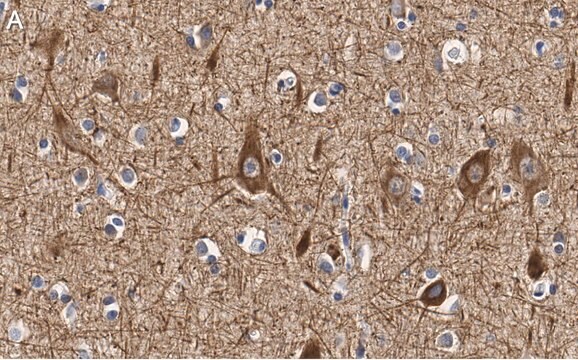SAB4200811
Anti- Neurofilament 200-FITC antibody, Mouse monoclonal
clone NE14, purified from hybridoma cell culture
Sinônimo(s):
H-subunit, NF-H
About This Item
Produtos recomendados
fonte biológica
mouse
conjugado
FITC conjugate
forma do anticorpo
purified from hybridoma cell culture
tipo de produto de anticorpo
primary antibodies
clone
NE14, monoclonal
Formulário
buffered aqueous solution
peso molecular
200 kDa
reatividade de espécies
pig, feline, chicken, bovine, human, mouse, guinea pig, rat
embalagem
antibody small pack of 25 μL
concentração
~1 mg/mL
técnica(s)
immunohistochemistry: 1:200-1:400 (4-8 ug/mL) using enzyme treated formalin-fixed, paraffin-embedded rat Cerebellum sections
Condições de expedição
dry ice
temperatura de armazenamento
−20°C
modificação pós-traducional do alvo
unmodified
Informações sobre genes
human ... NEFH(4744)
Descrição geral
Especificidade
Imunogênio
Aplicação
Ações bioquímicas/fisiológicas
forma física
Armazenamento e estabilidade
Exoneração de responsabilidade
Não está encontrando o produto certo?
Experimente o nosso Ferramenta de seleção de produtos.
Código de classe de armazenamento
10 - Combustible liquids
Classe de risco de água (WGK)
nwg
Ponto de fulgor (°F)
Not applicable
Ponto de fulgor (°C)
Not applicable
Escolha uma das versões mais recentes:
Certificados de análise (COA)
Não está vendo a versão correta?
Se precisar de uma versão específica, você pode procurar um certificado específico pelo número do lote ou da remessa.
Já possui este produto?
Encontre a documentação dos produtos que você adquiriu recentemente na biblioteca de documentos.
Global Trade Item Number
| SKU | GTIN |
|---|---|
| SAB4200811-100UL | |
| SAB4200811-25UL |
Nossa equipe de cientistas tem experiência em todas as áreas de pesquisa, incluindo Life Sciences, ciência de materiais, síntese química, cromatografia, química analítica e muitas outras.
Entre em contato com a assistência técnica